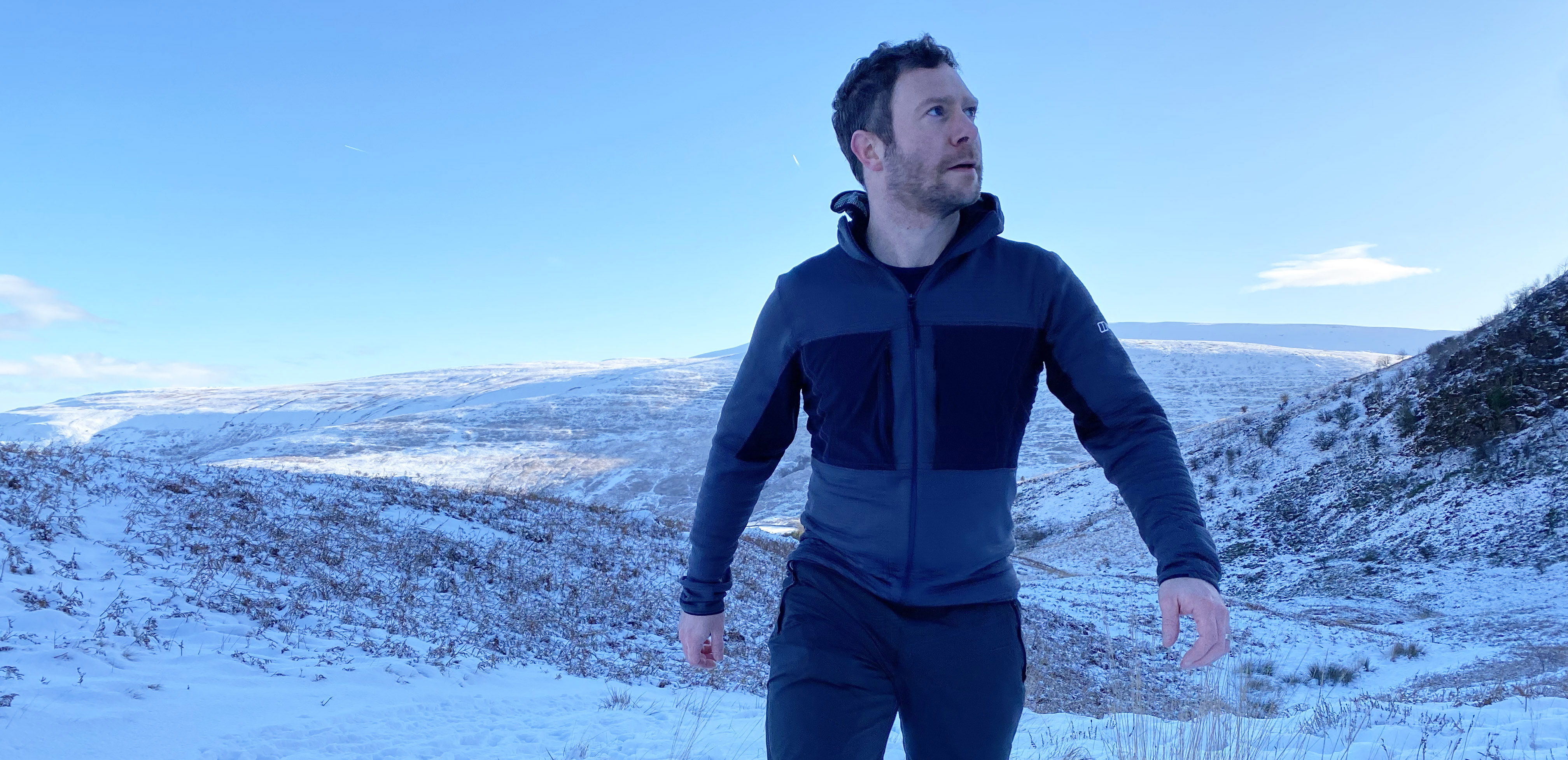Advnture Verdict
A well-crafted mid-layer for mountaineering exploits. Berghaus have managed to achieve a balance between warmth, breathability and weight, with specific fabrics used thoughtfully for the underarms and neck-gaiter. The two pockets are intelligently placed for use with a backpack and the hood is helmet compatible. Not ideally suited for casual wear but a great mid-layer for the mountains.
Pros
- +
Well-thought-through fabrics
- +
Breathable, warm, fast-drying
- +
Pockets that work with your backpack
- +
Innovative internal neck gaiter
- +
Recycled materials
Cons
- -
Not ideal for casual walks
- -
Sleeves can ride up
- -
Look won’t suit everyone
You can trust Advnture
British brand Berghaus has been going since England last won the soccer World Cup in 1966, which sadly (I’m English) was a long time ago. This longevity points to the enduring quality of its clothing and equipment. Almost 60 years later, it's still one of the most respected players on the outdoor scene.
Berghaus’s premium Extrem range is its equivalent of TNF’s Summit Series. The range is full of high-quality kit for mountaineers and climbers that’s designed to keep the wearer warm and comfortable while playing in alpine environments. October 2022 saw a refresh, with brand new waterproof jackets, down jackets, hiking pants, mid-layers and backpacks. The MTN Guide MW Hoody is the range’s premium mid-layer.
Berghaus MTN Guide MW Hoody: first impressions
The MTN Guide MW Hoody is a collaboration between Berghaus and Polartec, which provides the fabrics. In fact, the MTN Guide was a winner at Polartec’s 2022 Apex Awards, given to innovative products that feature Polartec fabrics.
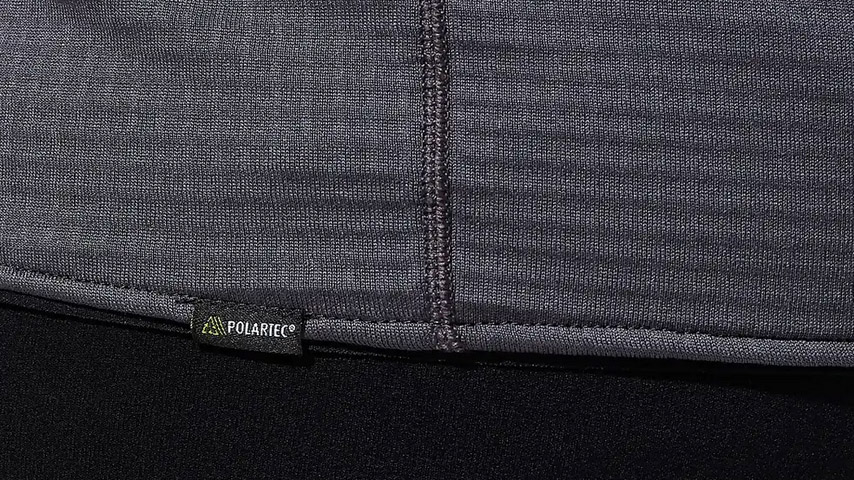
The textured look and feel of the Power Grid fleece fabric is obvious from first wear. Turn it inside out and you’ll see its thousands of tiny fleece rectangles. Hold it up to the light and the breathable mesh between each rectangle becomes apparent.
• List price: £130 (UK) / €140 (EU)
• Weight: 320g (men’s), 285g (women’s)
• Sizes: XS-2XL (men’s) 10-18 (women’s)
• Fabric: Polartex Power Grid main fabric, Polartec Power Wool (merino and synthetic) neck gaiter
• Colors: Gray/black (men’s), black (women’s)
This kind of grid construction has multiple benefits: warmth gets trapped in the air spaces, moisture is able to escape easily through the mesh and it also compresses more easily when packing away.
The MTN Guide’s large twin chest pockets are probably the first things that catch the eye. They’re placed to be still accessible while wearing a hiking backpack, fitting nicely between a pack’s chest strap and hip belt, clearly designed with the needs of mountaineers and hikers in mind. This is a highly functional feature, though it does give the hoody an aesthetic that won’t suit everyone.
Let’s dive deeper into the way the MTN Guide makes use of Polartec’s Power Grid fabric. The underarms are slightly different, featuring smaller fleece rectangles, with more space between them. This makes it a more breathable part of the garment, providing ventilation and working in conjunction with a waterproof jacket’s pit zips.
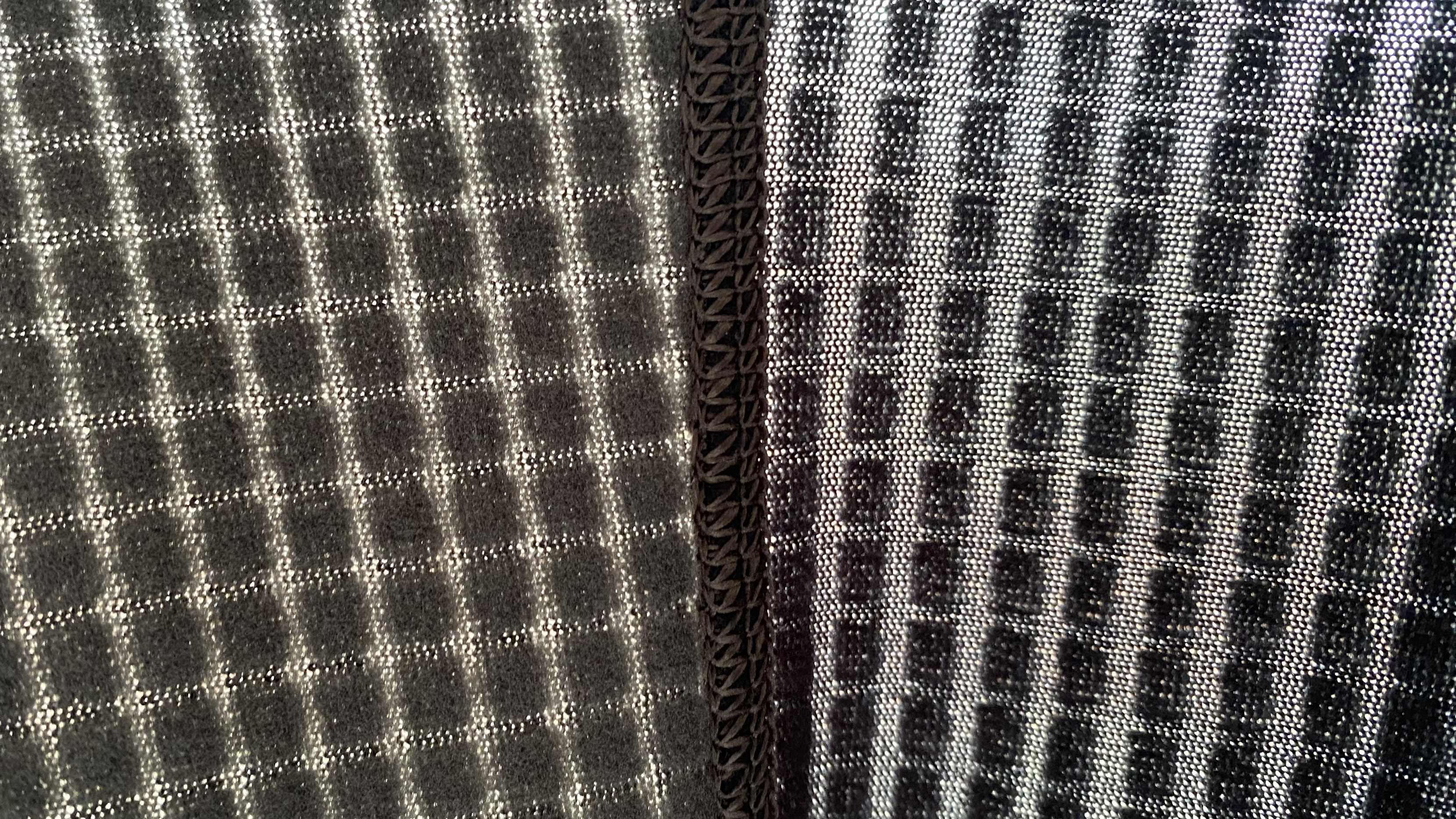
As another plus, the main fabric is also bluesign approved and is over 50% recycled. With alpine starts and late walk outs – or emergencies in the worst case scenario – Berghaus have included reflective detailing in the Extrem logos.
A different Polartec fabric, Power Wool, which is a mixture of merino and synthetics, is used in an integrated neck gaiter. The gaiter is a lovely little touch. You can either loop it around your neck, bring it up over your mouth and nose for when conditions get truly horrendous or flip it around behind your neck out of the way.
The zips on the chest pockets feature long pull tabs, while the main front zip has an even longer one. Both enable easy manipulation with gloved hands. To stop heat from escaping, the main zip is backed by an internal fabric guard.
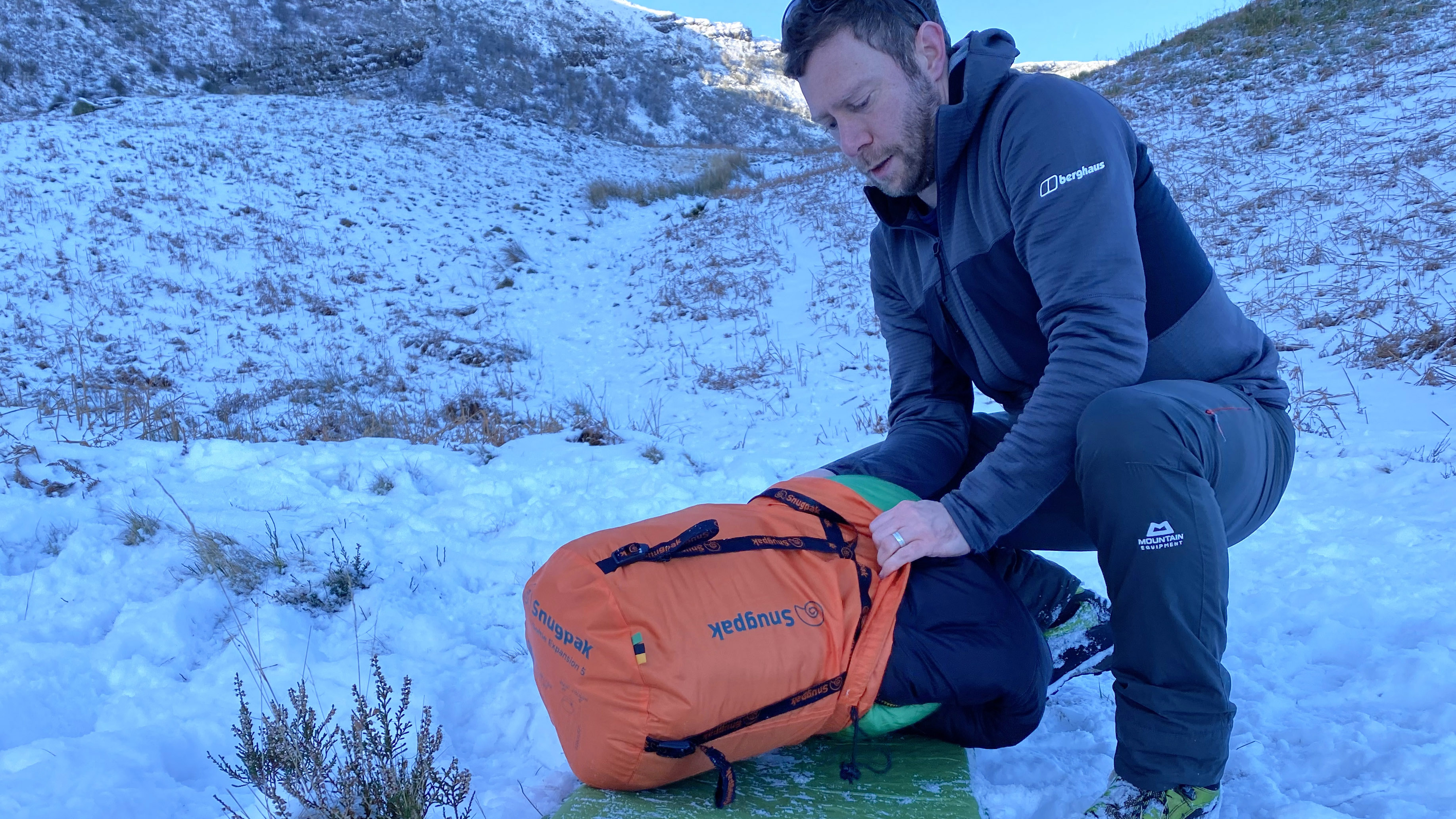
Berghaus MTN Guide MW Hoody: on the trails
During the test period, I wore the MTN Guide as a mid-layer on snowy hikes in the Brecon Beacons National Park and on mountain scrambles in Snowdonia National Park, as well as wearing it as an outer layer on several casual walks close to home.
It’s comfortable and feels nimble, weighing in at just 320g, which is particularly light for a fleece. Importantly for a mid-layer, it’s fairly snug fitting but not too tight: I was able to wear it on top of a base layer and another mid-layer. The sleeves can ride up when putting an additional layer over the top and there are no thumb loops to hold in order to stop this from happening.
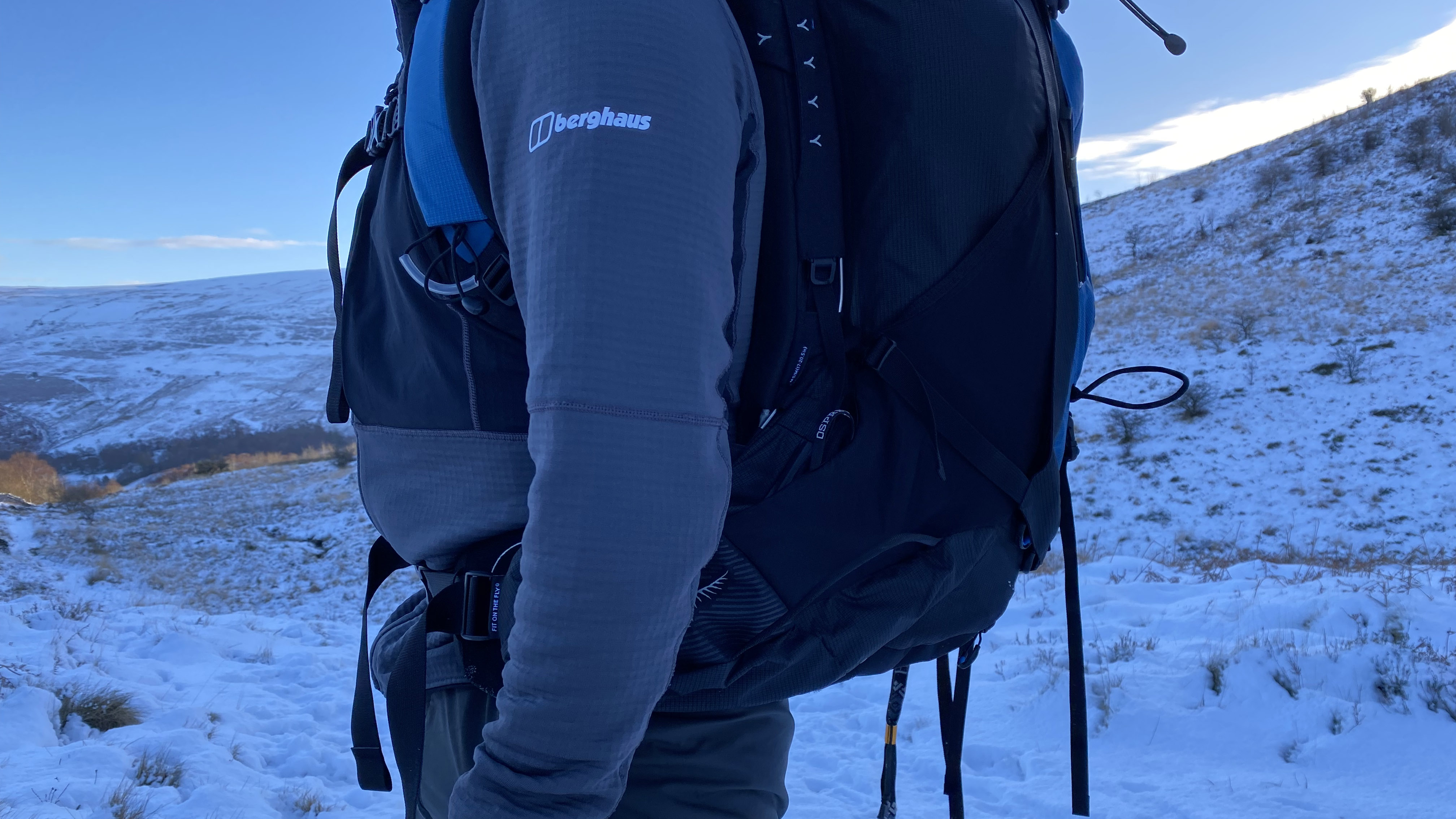
On the trails, it performed its primary tasks with aplomb. It worked with my other layers to regulate my temperature during some fairly stiff ascents and keep me warm while I took in those summit views. When things got a little warm, I always had the option of unzipping the main zip and letting air in that way. During scrambling forays, at no point did I feel my movements were restricted.
When scrambling, I had my helmet on, though to be honest it wasn’t cold enough to warrant putting my hood up. Nevertheless, I did test the hood both under and over my helmet and found it comfortable either way, though admittedly Berghaus designed the hood to go underneath.
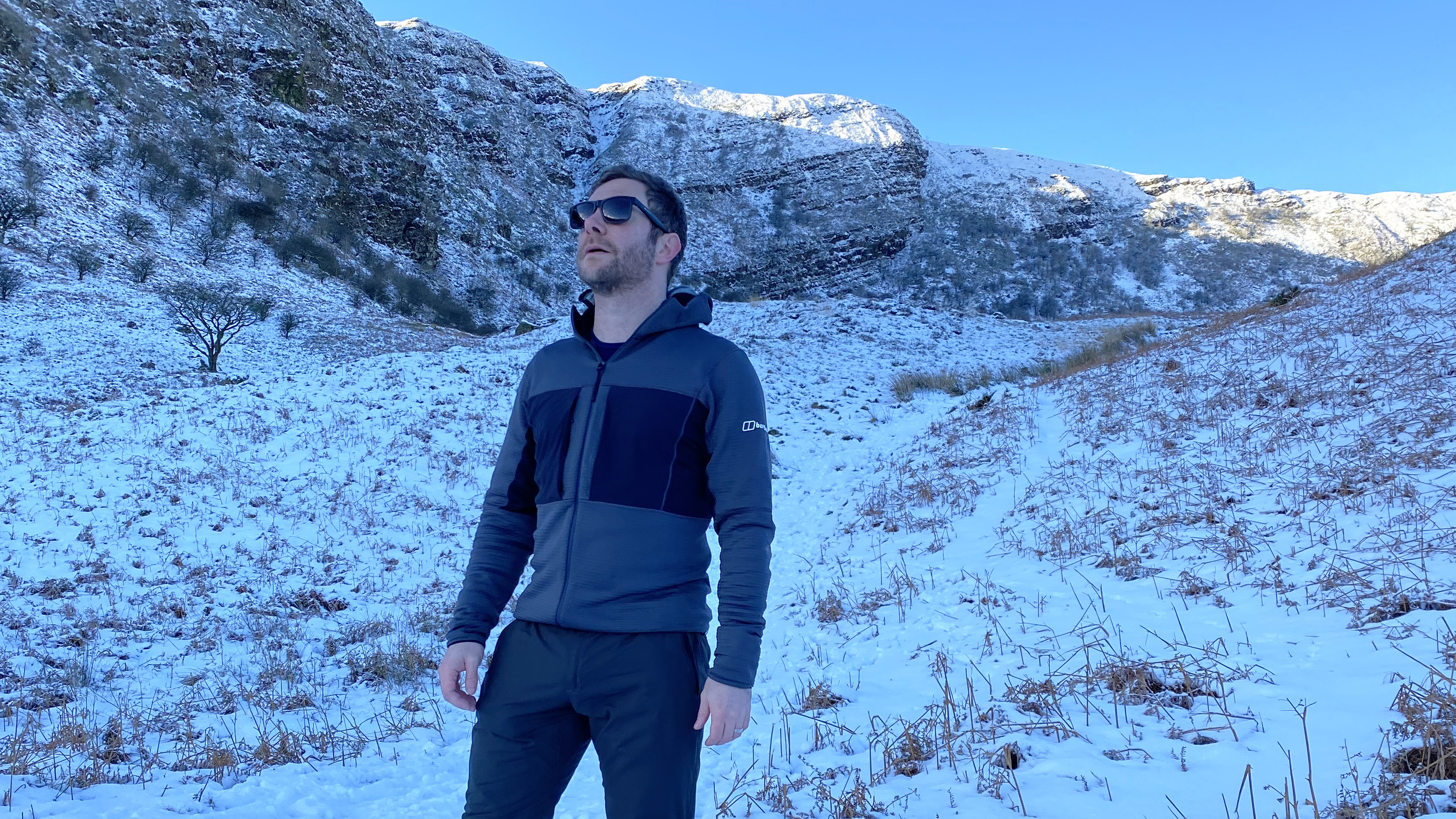
The chest pockets are superbly located for easy access. Too often do pockets become inaccessible once a climbing harness and backpack are in place, so to have these large storage options still available when fully kitted out is great. They’re large enough to take items like a phone, GPS unit, compasses or small map sheets. I’d even slot a larger map into one. Yes it would hang out the side but it's a quick and easy way of stuffing the map away securely under a waterproof jacket.
There’s a downside to the functionality of these pockets though. Something that’s intended for specific hiking and mountaineering use is often less than ideal for casual walks and this is the case here. If worn as an outer layer while walking the dog or taking a stroll, there’s nowhere to put your hands for warmth. The pockets become somewhat surplus to requirements, as you're likely to use your pants' pockets in this scenario.
I found the internal neck gaiter a nice little touch and it was handy to have whenever the mercury plummeted. It also meant I could leave my usual neck gaiter at home, thus saving weight in mind daypack – every gram counts, after all.
Alex is a freelance adventure writer and mountain leader with an insatiable passion for the mountains. A Cumbrian born and bred, his native English Lake District has a special place in his heart, though he is at least equally happy in North Wales, the Scottish Highlands or the European Alps. Through his hiking, mountaineering, climbing and trail running adventures, Alex aims to inspire others to get outdoors. He's the former President of the London Mountaineering Club, is training to become a winter mountain leader, looking to finally finish bagging all the Wainwright fells of the Lake District and is always keen to head to the 4,000-meter peaks of the Alps. www.alexfoxfield.com
